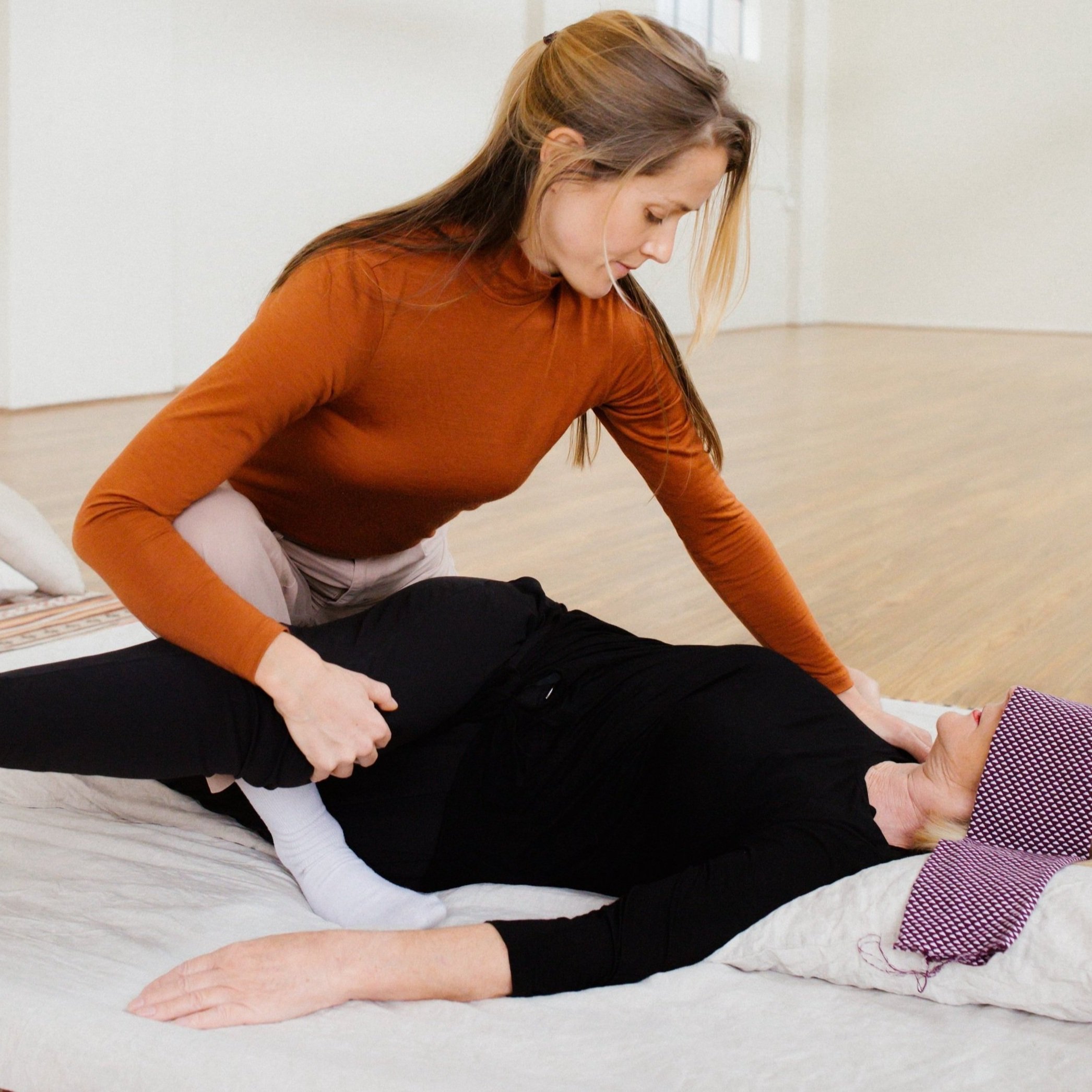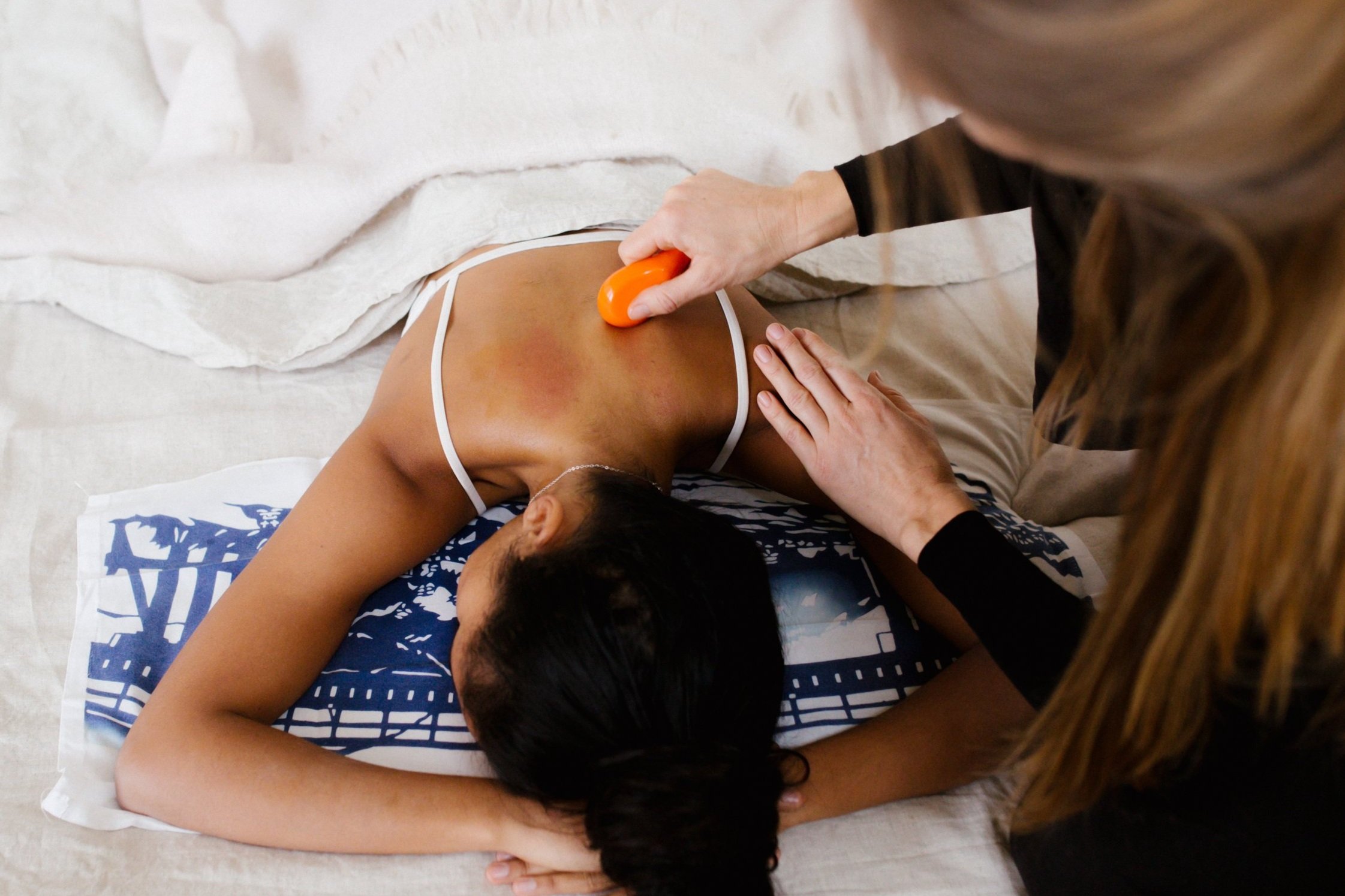
A holistic form of bodywork with its roots in the ancient knowledge of East Asian Medicine.
“The whole purpose of shiatsu is to encourage a free flow of energy thoughout the body and mind.
Where there is tension, there is constriction and consequent restriction of blood and energy circulation.
Where there is relaxation, there is ‘opening’ and consequent free flow of blood and energy.”
— Chris Jamey & Gabriel Moja
Therapeutic Tools
-
Incorporates a range of techniques (eg. (pressing, kneading, tapping, stretching), applying pressure over various parts of the body to affect a therapeutic result. The pressure used can be firm or light, using not only hands but feet, elbows, knees and forearms. Working to find the blockages and enhance the flow of Qi & blood.
-
Based on the meridian system.
Depending on your needs on the day your practitioner may select a few points to work with manually by holding or pressing over, or using another tool like moxa or cupping over these points.
-
Cupping therapy is an ancient East Asian Medical practice in which a cup is applied to the skin and the pressure in the cup is reduced (either by heat or suction) in order to draw and hold skin and superficial muscles inside the cup.
Cupping is an effective treatment to relieve sore muscles, muscle spasms, muscle tension, provide pain relief, encourage blood flow, encourage the lymphatic system to promote healing and improve flexibility and range of motion.
-
Moxibustion (or moxa) is a form of heat therapy. It involves burning moxa, a cone or stick made of ground mugwort leaves, on or near your body's meridians and acupuncture points. The resulting heat helps stimulate these points and improves the flow of qi (energy) in your body.
Great for bringing warmth and flow back to areas of depletion. Can relieve pain and provide relaxation. Also shown to have benefits in reducing inflammation, joint stiffness, joint pain and to prevent joint destruction.
-
Gua sha involves using a smooth-edged tool to gently scrape areas of your body.
This stimulation helps to release stagnant qi and blood in the body, encouraging a healthy flow of energy and blood back to areas of tension & build up.
Great for headaches, back & neck tension.
-
Dietary therapy, looks at the properties of food from a vastly different lens than that we know in the West.
Food and drink have energetic properties based on their taste (sweet, spicy, salty, bitter, sour) and nature (hot, warm, neutral, cool, cold), supporting the qi, blood and fluids of the body and affecting its relative balance of heat and cold.
This concept is ingrained within Asian culture as most speak of the benefits of food in terms of its warming or cooling nature, its effect on a certain organ or what food should be eaten at a certain time of year or life.
For example, post-partum women eat a regimen of warming foods to nourish the qi and blood that had been lost through childbirth.
-
In alignment with Oriental Medicine your practitioner may recommend some home treatment in the form of stretches, exercise or self acupressure.

Each session is uniquely tailored to your needs and preferences
The pressure applied as we work with the body can be firm or light. Your practitioner will take the time to understand your needs on the day & create a treatment plan to address not only the presenting symptoms but get to the underlying cause(s).
When receiving shiatsu you remain clothed and covered* with a blanket and treatment is done on a Japanese style futon with supporting bolsters and pillows, adaptable to any bodily needs.
Treatment positions may be on your back and stomach or side lying. There can also be the use of seated positions as your practitioner assesses each client individually.
The treatment allows for the client to remain clothed therefore, comfortable, loose fitting clothing is recommended.
*NB: In the case where moxa, cupping or guasha is being integrated into your session there may be the need to remove a layer of clothing, or to slide clothing up to allow access to the skin.
There is a vast range of conditions that respond well to Shiatsu treatment, some of which are:
Women’s Health: Hormone (im)balance, Menstrual discomfort/disorders, Preconception & Fertility, Pregnancy, Postpartum, Menopause
Musculoskeletal Ailments: Muscle tension, Joint pain, Injuries, Recovery, Posture
Sleep, Fatigue, Insomnia
Mental Health: Stress, Anxiety, Depression, Emotional regulation
Headaches & Migraines
Digestive disturbances
Immune system support
Respiratory support: Asthma, Breathing

Literally translated as ‘finger pressure’, Shiatsu originates from the Japanese tradition. Developed as a harmonising therapy to promote health & wellbeing.
Shiatsu works to stimulate the circulation of Blood & Qi (Ki, or Chi) throughout the whole body. The flow on affect: easing muscle tension, stress and stagnation, replenishing energy to areas previously blocked.
A little about East Asian Medicine…
East Asian Medicine encompasses a range of traditional medicinal systems.
Whilst it is based on Traditional Chinese Medicine (TCM), it is not confined to China in its geographic range. Early forms of East Asian Medicine were shared throughout Central and Eastern Asia over millennia, as they are today.
Ancient East Asian Medicine was systemised by Chinese practitioners and authors over at least a 2500-year period, to the present day, forming what we now know as Chinese Medicine. The term “East Asian Medicine” or “Oriental Medicine” is used now to differentiate it from Chinese Medicine. However, Chinese Medicine heavily informs modern East Asian Medicine, with its shared rich and long history.
East Asian Medicine consists of pulse taking, tongue diagnosis, acupuncture, moxibustion, dietary therapy, herbal therapies, massage/bodywork, gua sha and cupping.
As Shiatsu is a Japanese form of bodywork, we focus on Japanese approaches to the Oriental therapies we practice. For example, Hara diagnosis is a key diagnostic technique in Shiatsu that is rarely used within Chinese Medicine systems.







